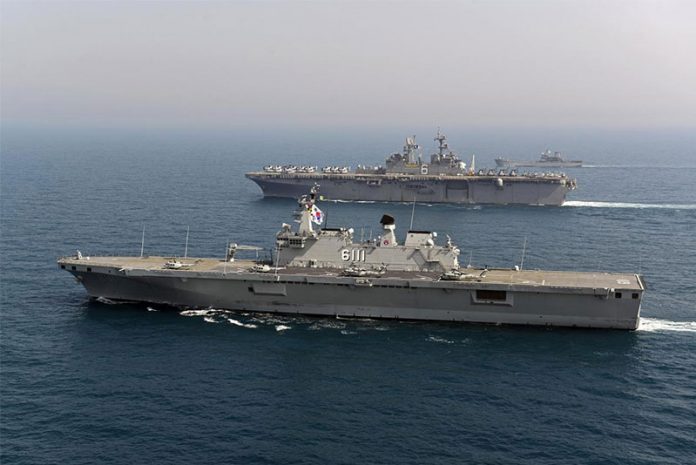During the same week as the Dubai Airshow in November 2009, Lockheed Martin celebrated the first flight of the AF-1 test aircraft for the F-35 development program, and a top air force official in the United Arab Emirates (UAE)—Brig. Gen. Ibrahim Naser Alalawi—publicly declared his “hope” that his country would procure a fifth-generation fighter “within a couple years.” A decade later, Lockheed has delivered more than 435 F-35s to eight countries, but none so far to the UAE.
With the 2019 edition of the biannual air show ready to run from Nov. 17-21, the UAE’s search for a new stealth fighter may be set to take nearly another decade. In the last two years, the UAE has commissioned a billion-dollar upgrade program for the air force’s F-16 Block 60s and launched a service-life extension program for its Mirage 2000s. The combination gives the UAE the flexibility to defer one of the world’s largest fleet replacement programs for fighters by several years.
“It certainly looks like the UAE is trying to skip a generation and coast on their F-16 Block 60 and Mirage 2000 force until they can get F-35s, which will likely be around 2026 or 2027,” says Richard Aboulafia, vice president of analysis for the Teal Group consultancy. That timeline assumes orders by the UAE around 2024, followed by deliveries to a U.S. training base in 2026 and transfer to the UAE around a year later, Aboulafia says.
It was only two years ago that the UAE’s potential F-35 order appeared more imminent. During the first year of U.S. President Donald Trump’s administration, officials succeeded in reopening stalled negotiations with the Gulf Cooperation Council on several arms sales. “The Obama administration would not talk about the F-35” to countries in the Middle East, says Derek Bisaccio, a regional market analyst for Forecast International. “That seemed to change when Trump took office.” U.S. defense officials openly discussed the “ongoing,” early talks with the UAE about a potential F-35 deal during the last Dubai Airshow in 2017.
The timing of the new sales discussions also followed a pattern of U.S. policy. The first F-35I ordered by Israel arrived at Nevatim AB in December 2016. The U.S. government generally offers Israel at least a five-year head start on new fighter technology, then allows other governments in the regions to import the aircraft, Aboulafia says.
The F-35 may not be the only fighter on the UAE’s long-term shopping list. Alalawi displayed a picture of the F-35 as he expressed hope in a fifth-generation fighter acquisition in 2009, but the UAE is not exclusively tied to the American fighter. In 2017, the UAE government signed a memorandum of understanding with the Russian Aircraft Corp. to collaborate on the design of a lightweight, next-generation fighter. Neither side has publicly moved the relationship forward over the last two years.
“There’s been precious few details on what the concept of the aircraft would be,” Bisaccio says. “This could well prove in time for the UAE a bargaining chip in negotiations with the United States.”
The UAE has been careful to avoid reliance on a single government for weapons. The current fighter fleet is split between the U.S.-made F-16s and French-built Mirage 2000s. That policy could continue even if the UAE signs a deal in the long term for F-35s.
“There’s still a chance the UAE Air Force is going to give a little bit to everybody,” says Michel Merluzeau, director of Aerospace Market Analysis for AirInsight. “If they acquire an F-35, I think they’d go with a micro-fleet. Maybe a wing: 30-40 aircraft. It would be a mistake to think they’d buy an equivalent number of fighters as they did with the F-16.”
The most logical alternative to the F-35 for the UAE could be the Rafale, Dassault’s successor to the UAE Mirage 2000 fleet. Block upgrades, such as the F4 and F5, will introduce teaming capabilities with unmanned combat air vehicles, along with new weapons and sensors.
For the moment, the UAE has time to wait and consider its options. The service-life extension for the Mirage 2000 fleet provides the UAE with at least a decade to deliver a replacement.
“When you look at the [Mirage 2000s], these are near [the] Rafale in terms of avionics and weapon systems,” Merluzeau says. “They have a good 10 years left.”
Read more at: https://aviationweek.com/



